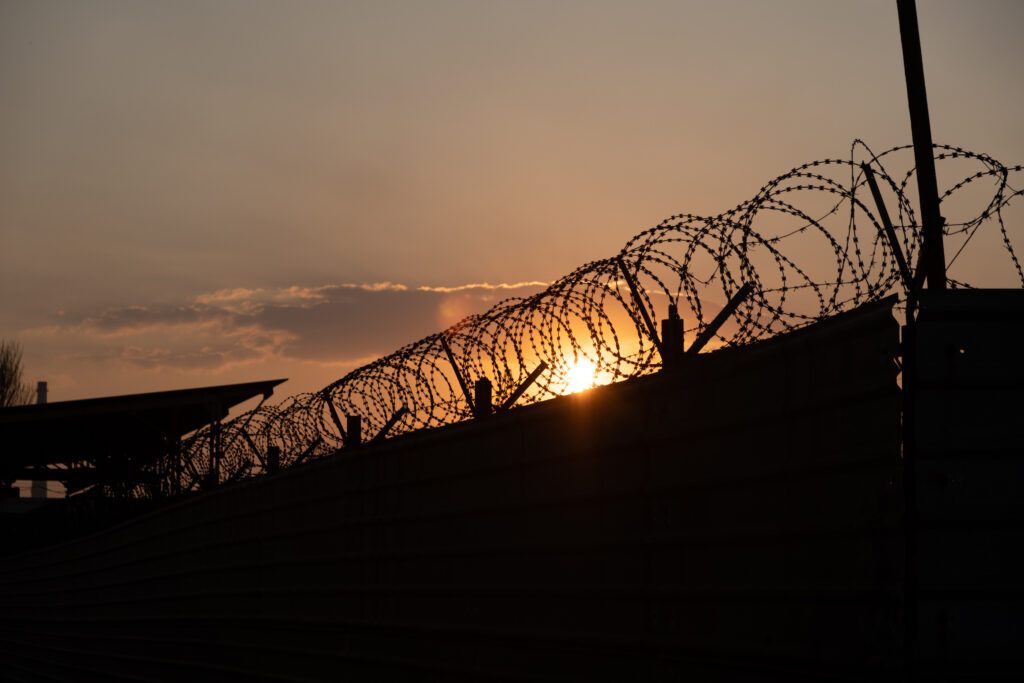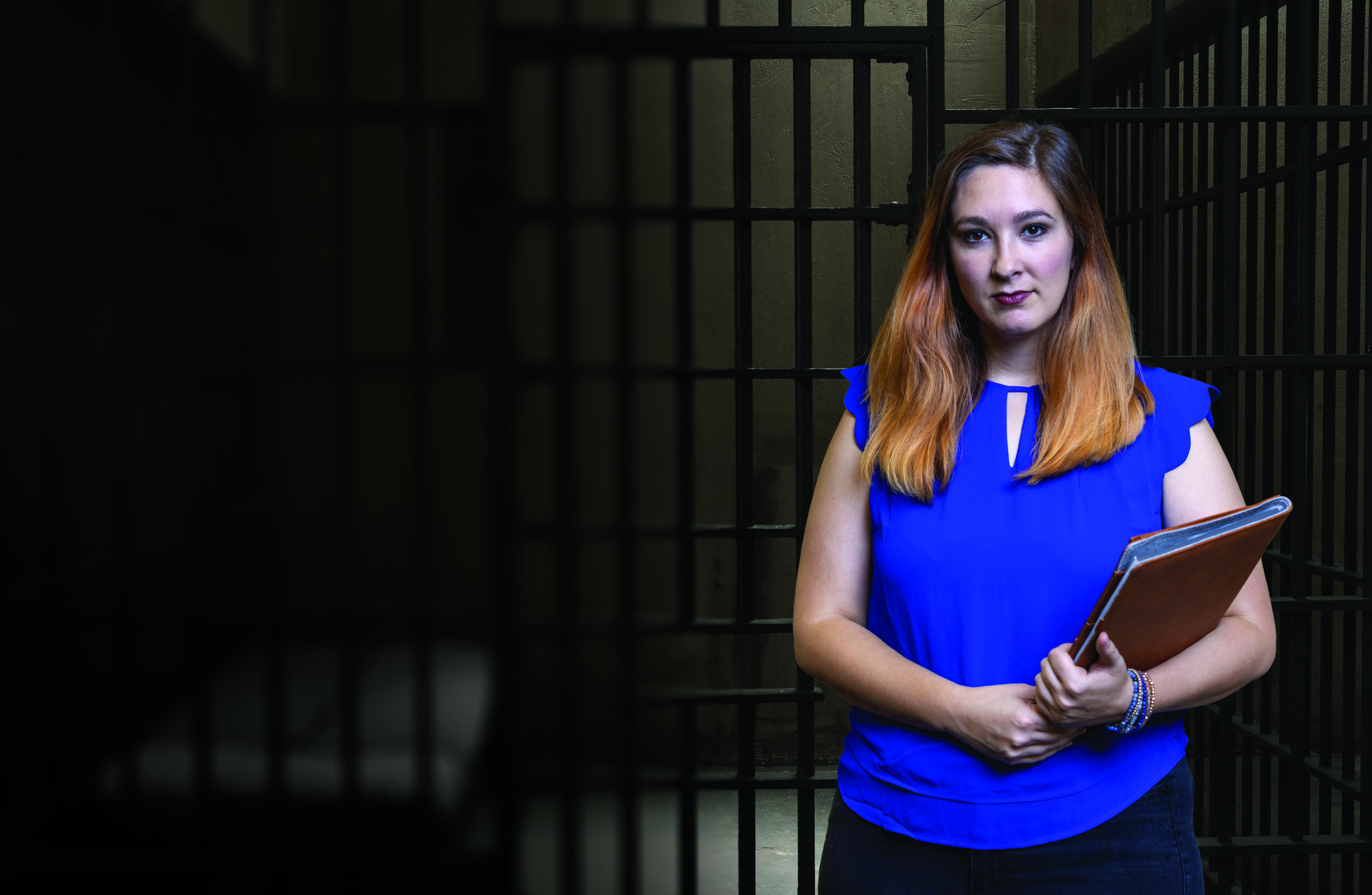Life-threatening Conditions in Texas Prisons
Triple-digit temperatures in Texas prisons can be deadly for incarcerated people and staff during heat waves
Texas is one of at least 13 states without universal air conditioning in its state prisons.
The units regularly reach extreme temperatures of over 110 degrees, with at least one unit recording a high of 149 degrees on the heat index, putting incarcerated people and prison staff at risk for illness and even death.
“It’s part of the sentence in Texas that you’re being punished additionally with life-threatening temperature conditions,” said J. Carlee Purdum, a research assistant professor in the Department of Landscape Architecture and Urban Planning and the Hazard Reduction and Recovery Center, who studies how hazards and disasters affect those incarcerated. “With climate change, A/C is a right to life.”
With about 70 percent of the prisons in the Texas Department of Criminal Justice operating without full air conditioning, and with state heat records met and broken annually, Purdum is trying to bring legal change and awareness for what she calls “a hugely overlooked area of human rights.”
“It’s a really dangerous situation. We have very crowded prisons — hundreds or thousands of people facing extreme temperatures in units that are made of materials that will trap heat,” she said. “Incarcerated people have higher rates of mental and physical illness. They’re vulnerable populations.”
The politics of prison
The reasons Texas prisons aren’t air conditioned are primarily political and financial, said to Purdum.
“The argument is that it’s too expensive,” Purdum said.
But current conditions are costing them too. Purdum says the state is potentially on the hook for millions of dollars in class action lawsuits from the families of people who have died from heat-related illness and conditions. What’s really happening is lawmakers and citizens don’t want to spend money on upgrading prisons.
“There is this idea that incarcerated people are undeserving of air conditioning,” said Purdum. “Prisons are the only institutions where people are in state custody, think hospitals or schools, where people aren’t broadly air conditioned.”
Purdum says many people consider these conditions cruel and unusual punishment, a potential constitutional violation, and argue it reduces the stature of the U. S. and Texas around the world.
“It’s extremely embarrassing nationally and internationally,” Purdum said. “Someone was recently refused to extradition from a Scottish court to Texas because their courts considered our conditions inhumane.”

A call for change
Purdum testified at the Texas House Appropriations Committee in June with the grim results of a report she authored with Benika Dixon, visiting assistant professor at the School of Public Health and Faculty Fellow of the Texas A&M Hazard Reduction and Recovery Center, and Dr. Amite Dominick the Director of the nonprofit organization the Texas Prisons Community Advocates.
Informed by surveys of over 300 incarcerated people, the report describes the shortcomings of the Texas prison system’s heat mitigation efforts and policies, especially during COVID-19. Current heat mitigation policies, which were formalized following a 2018 lawsuit include:
- identifying those who are most at risk for a heat-related illness and housing those people in areas with A/C,
- having water and ice constantly available,
- additional showers when needed,
- having respite areas available when requested,
- and selling cooling items such as fans, cooling towels and drinks with electrolytes available for purchase in the prison commissary.
“The policies are ineffective and inefficient,” she said. “It impacts the safety of the incarcerated, their families and the correctional officers.”
Not enough
Purdum says the efforts aren’t always implemented and are not “nearly enough” and that many incarcerated people don’t have access to those resources.
One example was how the system has said it is prioritizing the most vulnerable incarcerated people for access to air-conditioned beds. However, the most recently available data from 2020 showed that 22 percent of those designated as most vulnerable in the prison system, about 2,615 incarcerated persons, did not have access to air-conditioned beds despite the agencies efforts. The “cool bed priority offenders” are described as generally including those suffering from “heart disease, mental health disorders, dementia/Alzheimer’s disease, developmental disability, are 65 years or older, are also prescribed certain medications or have certain medical conditions.”
Other policies were followed to a degree but offered other dangers to prisoners.
“Water is often distributed in common areas, but there’s only one cooler for say 70 individuals,” said Purdum. “The coolers are constantly getting dirty and not cleaned. Insects, dirt and even vermin were found in the water. About a third of our survey participants had concerns about the water quality, which discouraged people from drinking in the summer.”
With a massive staffing shortage across Texas prisons, corrections officers are also unfairly stressed. They have to also work in the same heat and attempt to implement the policies, while also dealing with more violence and suicide due to the deteriorating conditions in the units.
“It’s up to them to make sure the prisoners are going to respite areas, getting water refills, but if someone gets injured it can be blamed on staff when it might be a structural mitigation issue,” she said.
Additionally, incarcerated persons are not paid for their labor, so many cannot purchase cooling items.
Conditions worsened by COVID-19
Pandemic lockdowns exacerbated all these issues, said Purdum. making conditions a “living hell” as described by those incarcerated.
She believes heat was a contributing factor to many COVID-19 prison deaths and made it more difficult for the infected to recover from the virus. Lockdowns made access to water and cooling rooms or respite areas rarer, and officers further restricted movement, access and interaction for fear of spreading the virus or becoming sick themselves.
Since 1998, at least 23 incarcerated persons have died from heat illness in Texas, but Purdum says that number doesn’t include many for whom the heat amplified or exacerbated their conditions.
“A person who dies of a heart attack may not have died from heat exposure directly, but continuous exposure to excessive heat will degrade their health over time,” she said. “That person may not have died if they weren’t in hazardous conditions every day.”
Next steps
The next phase of her research is funded by a $20,000 Texas A&M Innovation X-Grant, which will allow the research team to map risks in Texas prisons and learn how extreme temperatures affect populations including women, the elderly, people with disabilities, and women who are pregnant.
In addition to more surveying and mapping, they’ll be helping families of the incarcerated learn how they can help with community workshops that will teach them how to advocate for people inside.
“We want to educate the public on what the policies are, how they can advocate and affect change,” Purdum said. “We’ll be able to support the Texas Prison Community Advocates in their work, put on community workshops and help family members understand the policies and learn to advocate for themselves and their loved one.”
“It affects everyone when these systems aren’t safe,” she said.
Purdum hopes to convince policymakers that reducing heat exposure by adding air conditioning to all Texas prisons to bring temperatures down is more cost-effective and humane than trying to mitigate the impacts of excessive heat.
“People don’t understand how much of an issue this is, and it has enormous spillover effects for our prison systems and our communities,” she said. “We’re not talking about a luxury – it’s a necessity. We’re talking about a human right – the right to live and the right to be in a safe place.”


